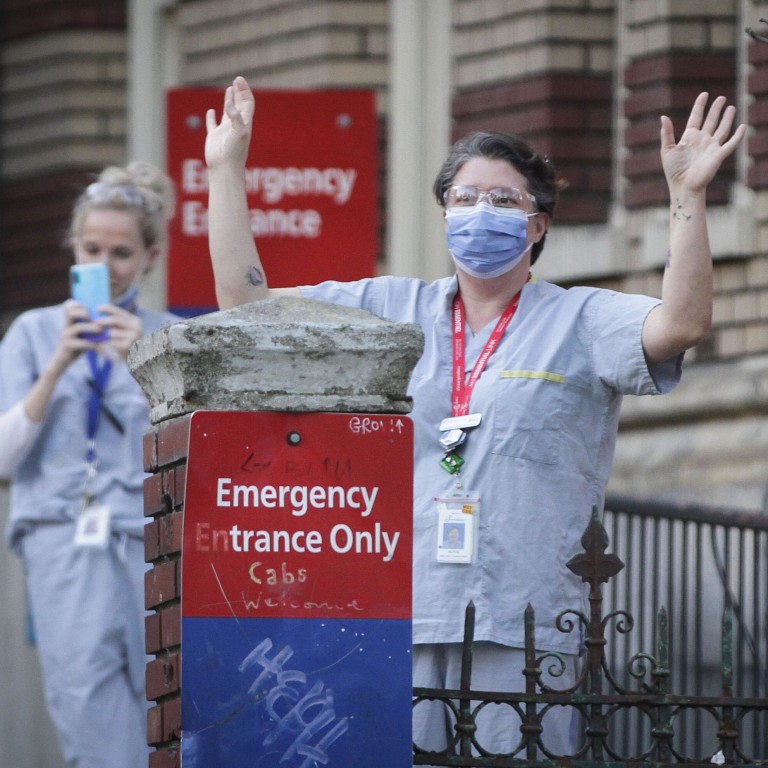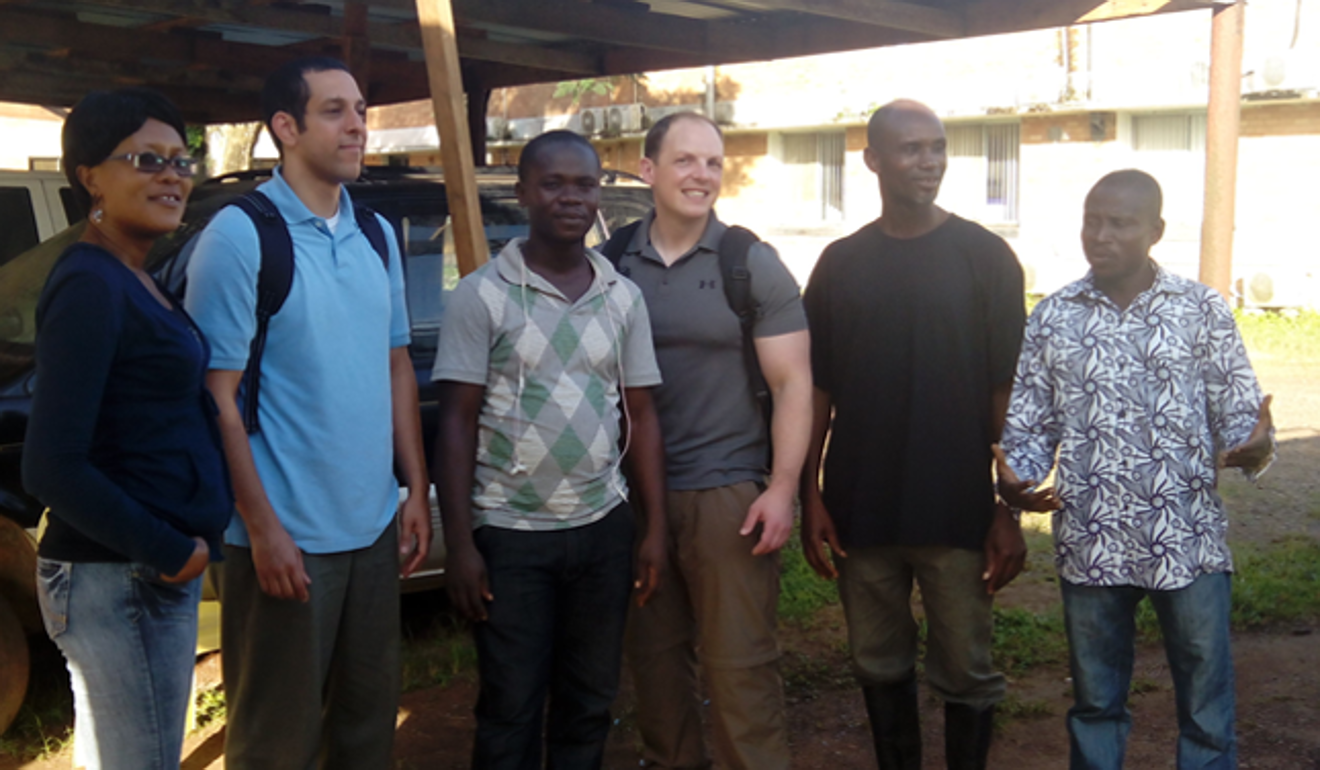
British Columbia is winning the coronavirus fight. Did it get lucky with weather, holidays and a shrewd Chinese community?
- Virologist Jason Kindrachuk ‘absolutely’ believes BC’s Chinese community may have suppressed Covid-19 by adopting physical distancing long ahead of others
- BC has reduced its daily rate of new infections to about 3 per cent, far below the 9 per cent rate in Quebec and Ontario
British Columbia has produced Covid-19 curve-flattening results that are the envy of Canada’s major population centres of Ontario and Quebec, thanks to the western province’s lower rates of infection, hospitalisation and death.
Random factors specific to BC could have helped beat back the disease, experts say: a large Chinese community that was practising physical distancing long before authorities suggested it, warmer weather, and even the timing of the province’s spring break.
BC’s rate of new cases of the disease, measured against the previous day’s cumulative total, has been about 5 per cent or less for the past week, dipping to 3 per cent on Monday.

That compares favourably to Quebec, where the rate is also falling but was around 9 per cent on Tuesday. Ontario’s rate was also 9 per cent on Monday.
Virologist Dr Jason Kindrachuk, Canada research chair in new and re-emerging viruses at the University of Manitoba, attributed BC’s “phenomenal” results to the earliness of its implementation of anti-pandemic measures, strong messaging about physical distancing, and rigorous pursuit of community transmission flare-ups.
“BC has really acted as a model for Canada in terms of how [a place with] a large population was able to get things under control fairly quickly, without seeing mass casualties and case numbers,” he said.
He said he “absolutely” believed the early behaviour of BC’s sizeable Chinese community, making up 12 per cent of the provincial population of 5 million, may have helped suppress the coronavirus outbreak.
By January, many Chinese shopping malls and restaurants in metro Vancouver were deserted. There were even attempts by local officials to persuade people to return to shops and restaurants – before authorities switched in March to telling people to stay at home.
“What you have in BC is a Chinese community that was seeing the impacts across Asia [and] had been through Sars … and there may have been a grass roots movement in that community to start with the physical distancing,” said Kindrachuk.
‘No mask, no service’ in Vancouver despite supply fears for health workers
Although research would need to confirm the impact of the BC Chinese community’s behaviour, Kindrachuk said his personal impression was “that’s fantastic, it needs to be applauded and recognised”.
The BC Chinese community’s reaction to the outbreak at its early stages “needs to be examined as we try to work out what things helped in different communities that we can all think about whether to adopt as time goes on.”
“In Asian communities there is more comfort and a relationship with these things [masks] in public … Did that have an impact? We’re still finding out,” said Kindrachuk.
Kindrachuk said he suspected adherence to physical distancing was the key factor for BC. But that was not always a matter of management.
Provincial health officer Dr Bonnie Henry on Monday credited early testing and “putting out the sparks” of community transmission for BC’s performance.
British Columbia is testing for Covid-19 faster than South Korea did
But she acknowledged the role of luck, and said the simple fact that Quebec’s fortnight-long school spring break began on March 2, while BC’s began on March 16, may help explain their different outcomes. Most BC school classes did not resume after the March spring break, but Quebec’s did.
“That’s a critical thing … We learned from Quebec [because] their March break was two weeks earlier than ours and people were coming back [and] getting sick. We put our [distancing] measures on at about the same time but they had a lot of community spread while we were just catching up,” Henry said.
“So part of it was the system that we had in place to detect early cases and part of it was luck and part of it was timing.”

Similarly, warmer weather in Vancouver, compared to the major population centres of Quebec and Ontario, could have worked in its favour; some scientists have theorised that warmer weather may suppress Covid-19, in the same way that influenza is seasonal.
BC’s flu season typically winds down earlier than those of Quebec and Ontario, annual statistics show.
Those Asian face mask wearers? They aren’t crazy or stupid, Vancouver
“Is there a relationship [between Covid-19] and temperature and UV, now that it is getting warmer?” Kindrachuk said. “We still don’t know if there is seasonality, but this may one of the things that we will learn over time.”
There have been 1,266 confirmed cases of Covid-19 in BC, compared to 4,726 in Ontario and 9,340 in Quebec.

Although diagnosed case numbers do not accurately depict how many people in BC actually have or had the disease, hospitalisations provided evidence that “BC has done quite a fantastic job”, Kindrachuk said.
BC’s Covid-19 hospitalisation rate is about 27.5 per million people, compared to about 40 in Ontario and 60 in Quebec. Hospitalisations have also stabilised in BC, suggesting that exponential growth in the disease has been arrested or greatly slowed, even as hospitalisations rise in Quebec and Ontario.
There have been 39 Covid-19 deaths in BC, compared to 150 and 132 in Quebec and Ontario respectively.
Kindrachuk said that on a global scale Canada was doing “quite good … but there are definitively countries doing better than we have, because they have had the opportunity to undergo faster containment procedures and broader testing.”
“But we’ve been doing quite well, especially when you look down south at the US,” he added.

